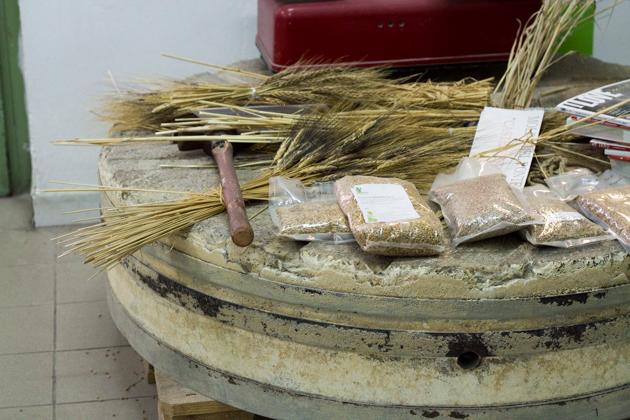
Wheat sheaths with bagged grain on an old grinding stone
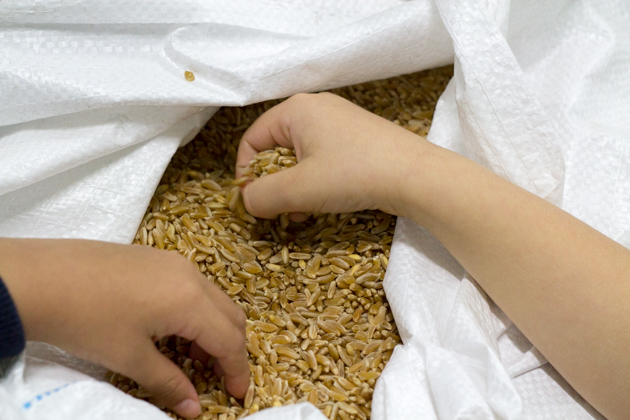
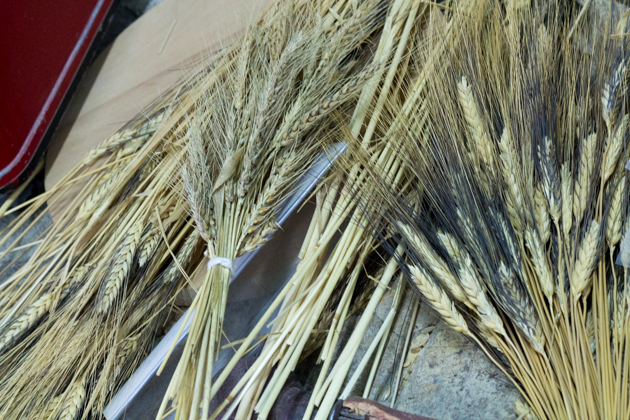
Shezaki wheat on the left and Maiorca wheat in the middle
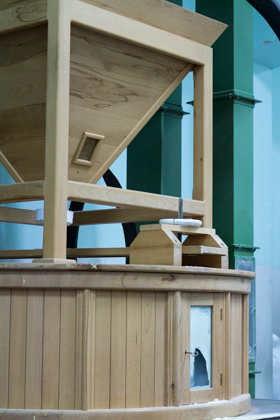
A traditional mill, stone grinding the ancient grains
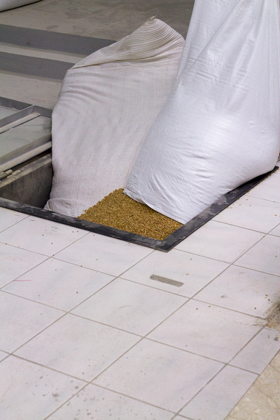
Wheat being loaded into a hatch which supplies the mill
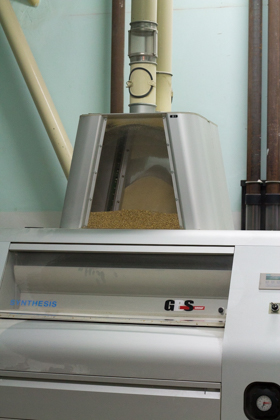
Modern looking wheat mills
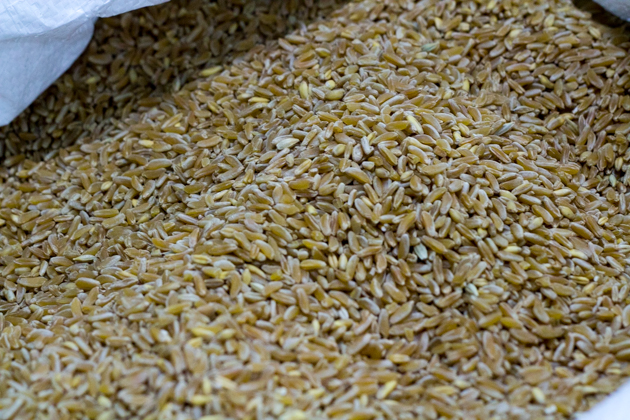
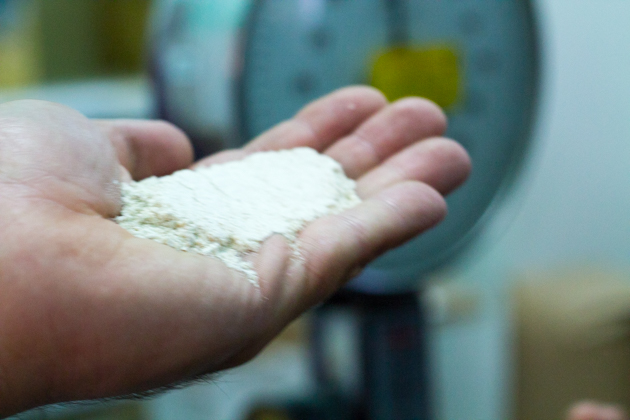
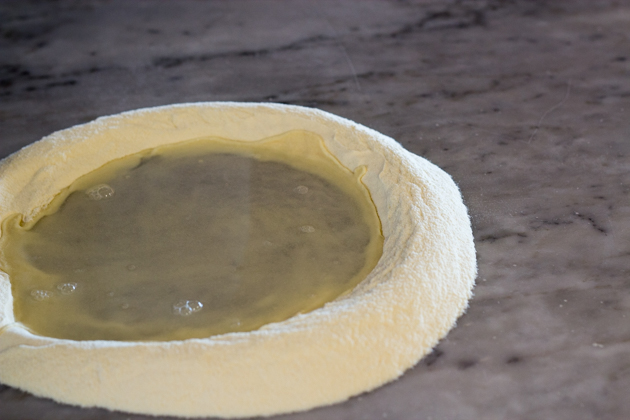
Flour and water to be mixed into pasta dough
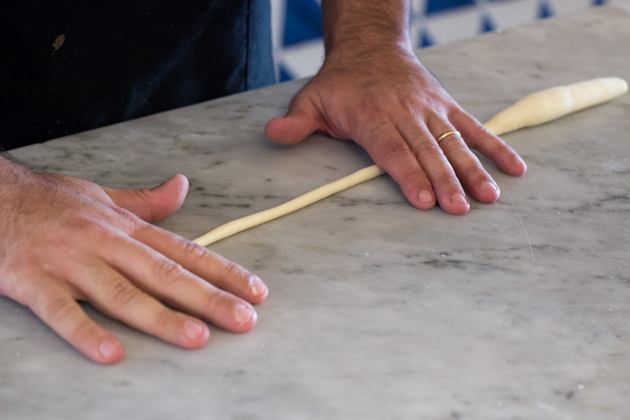
Rolling out the dough into strands
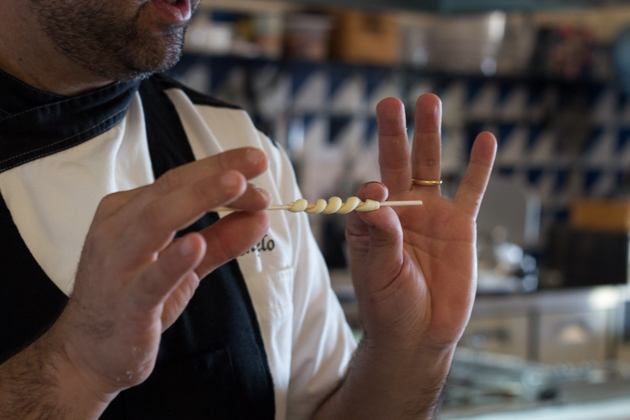
Roll the dough around the stick
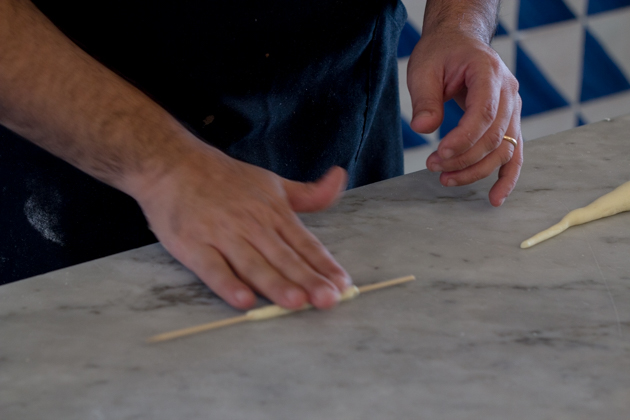
Flatten out on the table
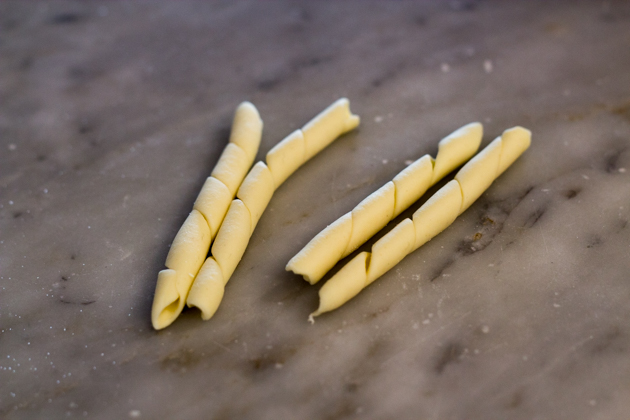
The finished busiate
Recipe:
Busiate con pesto trapanese (busiate with tomato and almond pesto) – Sicilia
Serves 4
This is a simple, healthy dish to make, particularly if you use or make a pasta made from ancient Sicilian grains or Kamut. This is a quintessential summer dish as the sauce requires no cooking and evokes memories of gazpacho (the cold tomato soup from Spain). I learned this dish from Angelo , the chef at Planeta’s Forestiera estate in Menfi.
If you find the flavour of garlic overpowering, then eliminate it in the beginning and then add a bruised whole clove of garlic with the tomato puree and let sit for 2 hours. Discard before using.
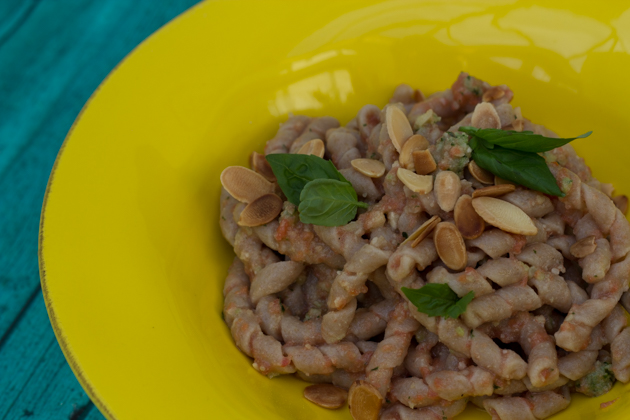
240 grams semolina rimacinata (fine durum wheat flour), can substitute Kamut or normal 00 or plain flour
120 grams water
8 grams basil
½ clove garlic
2 grams coarse sea salt
100 grams blanched almonds
50 mls extra-virgin olive oil
3 large / 500 grams tomatoes, very ripe
350 grams busiate (can substitute fusilli or another short pasta)
20 grams flaked almonds, toasted until golden
sea salt
Busiate (for an illustrated step-by-step guide, click here):
Make a mound of flour on a worktop and create a hole in the centre. Pour the water in the middle and begin incorporating the flour using your hand, adding bit by bit from the inside working out. Knead for 15 minutes until you have a stiff dough. Cover with a damp cloth and let sit for 30 minutes.
Break off a piece of dough and roll into a long, thin roll about half the width of a pencil. Cut into equal lengths of 4 cm and and roll the dough again. Pick up a skewer and wind the dough around the skewer. Place the skewer on the worktop and roll it to flatten the dough. Pull the skewer out. Repeat with the rest of the dough. It is best to let the busiate sit in the refrigerator for 24 to 36 hours to dry out a bit so that they maintain their shape when cooked. They can be cooked fresh but they may lose their shape.
Pesto trapanese (for an illustrated step-by-step guide, click here):
Prepare a large bowl of ice water. Soak the basil in the ice water.
In a large pot heat 5 litres of water with 50 grams of salt and bring to a boil.
Score a “X” in the skin of each tomato and plunge into the hot water for 1-2 minutes until the “X” enlargens or the skin looks looser. Remove the basil from the ice water. Use a slotted spoon to remove the tomatoes from the water and add to ice water. Retain the boiling water for the pasta. Remove the tomatoes from the ice water and peel the skin away and discard. Cut out the seeds and discard. For an illustrated step-by step guide to removing the skin and seeds of tomatoes, see here.
In a blender or using a mortar and pestle, grind the garlic with the salt to make a paste. (A mortar and pestle is more work but will give it more texture and heats the basil less making its flavour more pronounced.) Add the almonds and grind until broken up but be careful not to turn it into almond butter. Add the basil and grind until incorporated. Remove and place in a glass or plastic container (not metal as the tomato will react with it). Drizzle the olive oil over top.
Take the tomatoes and add them to a blender and puree. Pour the puree over the almond basil mixture.
Add the pasta to the water for 3 minutes if fresh or for the time indicated on the packaging if using dried. Mix the tomato together with the almond basil mixture and toss with the pasta to serve. Top with flaked almonds.
Happy Valentine’s Day everyone! If you want more information St. Valentine (he was from Terni in Umbria), see here.
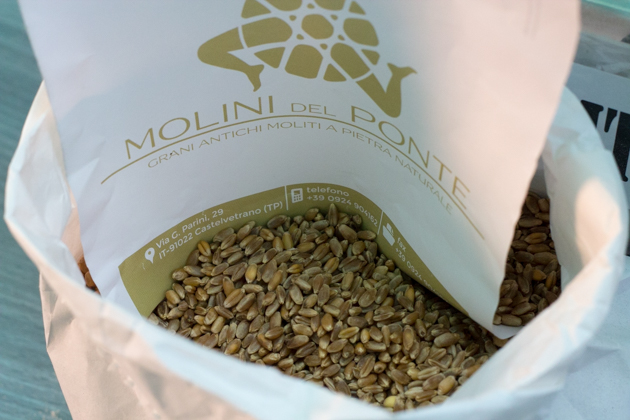

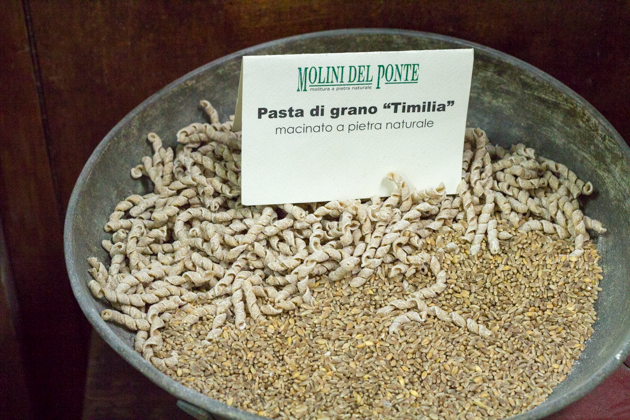
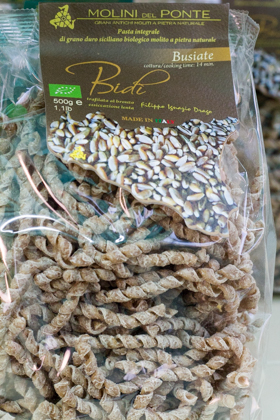

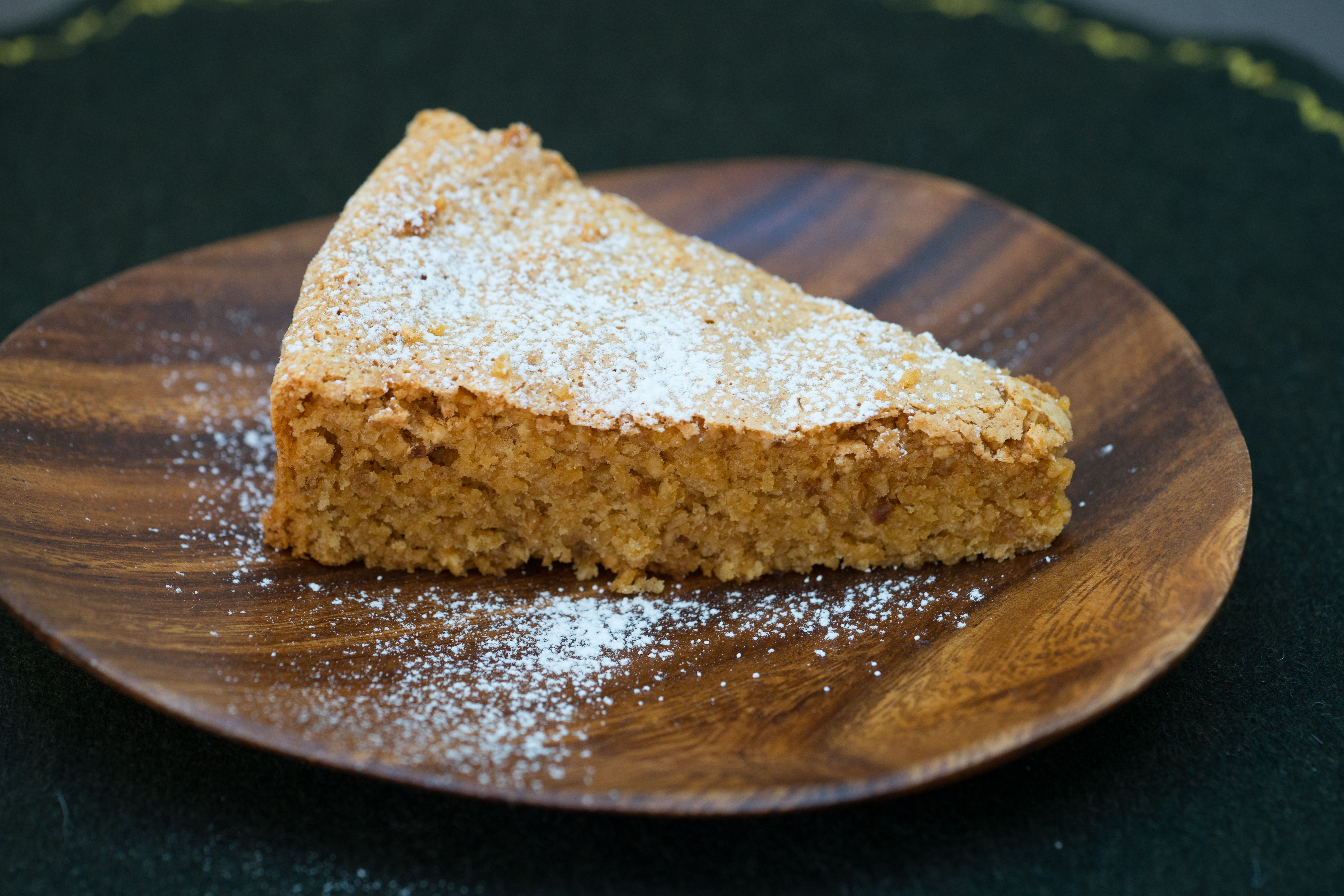
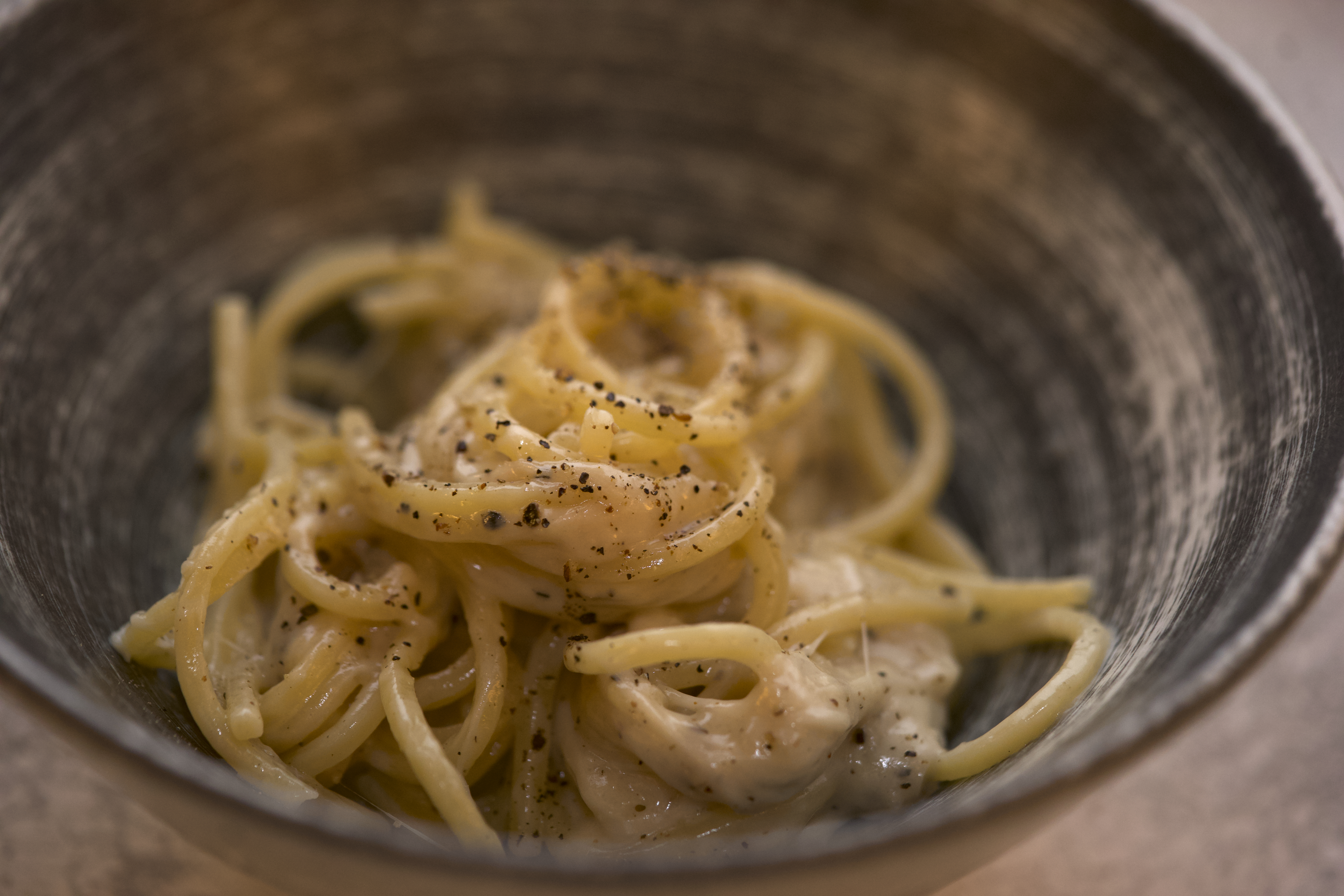

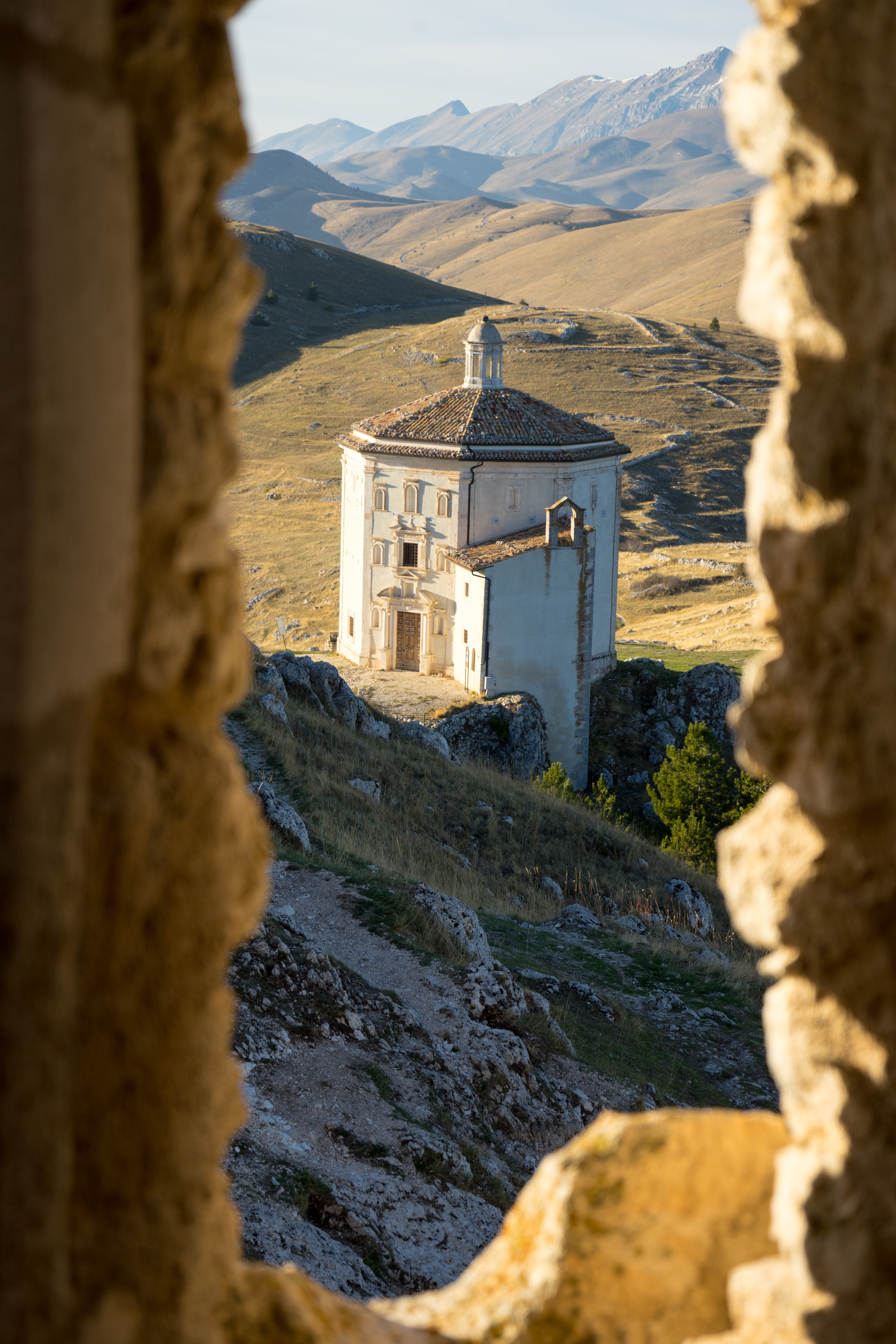
Leave a Reply